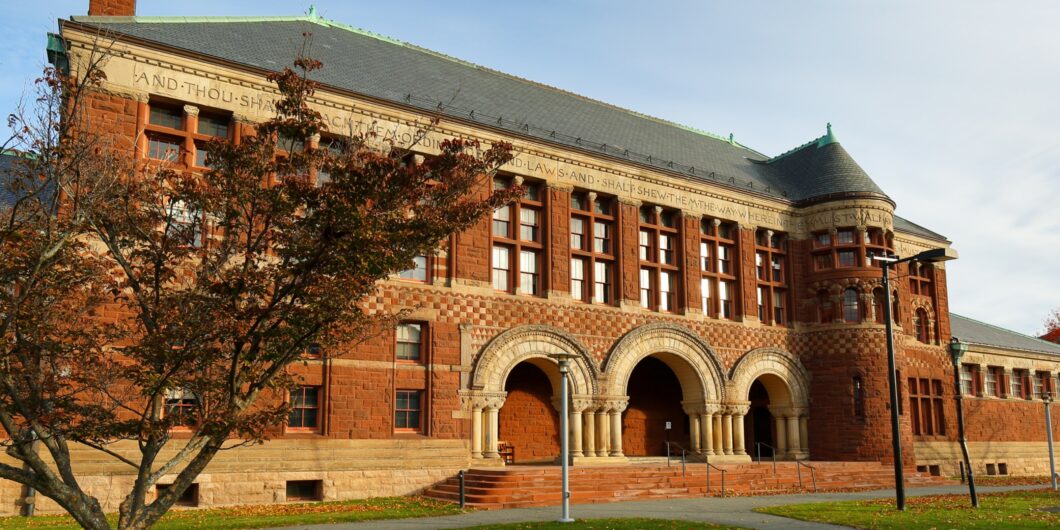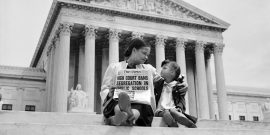Reparations arguments call for the kind of general racial classifications that have not been part of public law or finance since the Jim Crow era.
How Students for Fair Admissions Will Improve Legal Ed
Students for Fair Admissions v. Harvard has generated different reactions among law professors on the left and on the right. While those on the left believe it will harm legal education, many on the right think it will have little effect, due to potential evasion of its strictures. I disagree with the received wisdom on both sides.
Contrary to the concerns on the left, the decision is likely to change law schools for the better. It will reduce the mismatch between some students and the schools to which they are admitted, diminish campus orthodoxy, result in a more meritocratic selection of law review articles, and make faculties somewhat more ideologically diverse. As a result, law schools will better perform their key function in a democratic republic like ours—ventilating the wide range of legal arguments and methodologies that help advance the rule of law.
Contrary to the concerns of the right, it will prove difficult for law schools to evade the colorblindness mandated by the decision. If schools reverse-engineer their admission criteria to protect the status quo, courts will intervene. If they degrade their admissions signals by abandoning standardized tests like the LSAT, they will substantially increase the variance of their student’s ability, regardless of their race and ethnicity, and reduce the value of their diplomas.
The Problems with Preferences at Law Schools
Racial and ethnic preferences at law schools lead to the admission of students with lesser credentials. A range of problems cascade from this practice. Lower scores predict poorer performance at law school, creating what is commonly called the mismatch effect. For instance, the median LSAT score of black law school applicants is eleven points lower than the score of white and Asian applicants. That is a large difference of almost a standard deviation. This creates a situation in which the group with a lower median has a relatively small percentage of high-scoring test takers. Hence the more elite the school, the greater the need there may be for substantial preferences to assure racial and ethnic balance.
Richard Sander of UCLA has argued that admission of weaker students results in those students being less prepared for the bar exam and implicitly the practice of law in general. The reasoning is straightforward. The teaching at a school is geared to the median student at that school, not to those admitted with lower credentials. For instance, at elite law schools, relatively less time is devoted to learning the black letter law that is most helpful for the bar exam. The mismatch effect suggests that many admitted preferentially would become better lawyers if they were matched from the beginning with schools that focused on students of comparable preparedness. It does a student no favors to admit him to a school where he is unlikely to succeed.
The mismatch effect then comes to distort the entire culture of law schools. If a group of students identifiable by race and ethnicity perform substantially worse than others as their entering credentials would predict, the school comes under pressure to become less of a meritocracy. Grade inflation and grade compression arise to mask differential performance. Offices of Diversity, Equity, and Inclusion are needed to soothe the resulting tensions. Law reviews set aside slots based on identity rather than merit.
These developments in turn make it harder for law schools to maintain an atmosphere free from political orthodoxy. A DEI office’s programming of speakers is predictably left-liberal. A law review whose selection process is identity-focused is likely to select more identity-focused articles and be less receptive to right-leaning ones. Critical race theory, for instance, becomes an institutionally preferred way to explain differential performance.
Racial and ethnic preferences also affect faculty hiring. As “The Legal Academy’s Ideological Uniformity” shows, these preferences make faculty members even more left-wing than they would be in their absence. But law schools particularly need ideological heterodoxy if they are to create an atmosphere in which all plausible arguments and methodologies can be pursued. As I have argued elsewhere, the law is not always clear, and it will be best clarified if there is vigorous contestation from theorists of all political and methodological views. Thus, at least at law schools, the Harvard case is likely to have important benefits beyond assuring equal treatment of students without regard to race.
The Problems for Evasion
Some law school administrations would like to continue to choose by race and ethnicity despite the Supreme Court’s ruling. But every method of doing so poses significant problems. Simply reverse-engineering their admission criteria to achieve their preferred racial and ethnic composition will run afoul of the Court’s decision and likely be struck down by lower courts. Eliminating objective, merit-based criteria will decrease the quality among all racial groups. Alternatively, embracing more ideological criteria for admission is unlikely to be effective for racial and ethnic balancing and will raise questions about the political neutrality of law schools.
The Supreme Court is not likely to invalidate admission criteria if they have a plausible rationale that is not related to race and not too closely tailored to replicate racial preferences
To keep up preferences without explicitly using race, a university could try to reverse-engineer the facially race-neutral criteria to achieve the same result. For instance, one high-level administrator at an elite university has wondered if the university could prefer certain zip codes—presumably zip codes with a high number of preferred minorities. The Supreme Court anticipated this kind of evasion in its opinion, saying that a university could not establish by “other means the regime we hold unlawful today. . . . What cannot be done directly cannot be done indirectly. The Constitution deals with substance, not shadows, and the prohibition against racial discrimination is levelled at the thing, not the name.” Expect to hear this quotation widely repeated in lower courts.
It’s not entirely clear what would constitute this sort of forbidden indirect racial preference. A strong reading of the Court’s opinion would suggest that any race consciousness in the choice of criteria would violate the equal protection clause. Case law and common sense would support that view: Certainly, race-consciousness in the selection of any criteria that would disadvantage racial minorities would be unconstitutional. The entire thrust of Students for Fair Admissions is to protect all people as individuals and thus to impose symmetrically strong prohibitions on harming individuals by any kind of race consciousness, no matter what racial or ethnic group is the beneficiary.
But that strikes me (and Will Baude in his excellent podcast, Divided Argument) as strong medicine for the Court, even if it is the correct rule in theory. It would even invalidate state plans to admit the top five percent of any public high school to their flagship state university, if such a policy were consciously undertaken to increase minority representation. My own view is that the Supreme Court is not likely to invalidate admission criteria if they have a plausible rationale that is not related to race and not too closely tailored to replicate racial preferences—even if its effect on racial composition was considered when choosing the plan.
Hence, for instance, it will likely be possible for a law school to add preferences based on socioeconomic factors, even if it does so with the hope of improving its racial and ethnic balance. But this preference is unlikely to improve its balance very much. Given the large difference in median scores, a plus factor for relative poverty is unlikely to make much difference. All races and ethnicities have low-income people and thus it is likely that the racial composition will look similar to what it would be without any socioeconomic preference. Lee Bollinger, the outgoing president of Columbia and a supporter of the old regime, has similarly stated that eliminating legacies will have little effect on the racial and ethnic composition of a class.
Alternatively, schools could simply drop the objective criteria on which the beneficiaries of racial preferences have underperformed. This option, however, would undermine the value of a law school’s degree, because students of all races and ethnicities would then be of widely varying quality. Even if states make the bar exam easier to pass, schools have an interest in admitting the best students possible. Excellent graduates are likely to earn more and donate back to the school. Teachers have a much better time when students are closer in ability. The problem for teaching posed by the variance of student quality is greater for law schools than for undergraduate institutions. Undergraduates can choose more or less demanding majors. Law students, however, take almost entirely the same classes during their first year and have limited effective choices thereafter.
Law schools might instead try to make their admission criteria more ideological, saying, for instance, they will admit students devoted to “social justice” in the hope that it will change the racial and ethnic composition. But that change raises problems of its own. Introducing overt ideological criteria will annoy many alumni and enrage legislators in any red state, and conservative groups will (and should) facilitate pushback by creating a clearinghouse for information about changes in admission criteria. Even should a school institute this kind of criterion, it might not change the racial and ethnic balance much, because all applicants can strategically offer cheap talk in favor of social justice.
Similar dynamics are at play in faculty hiring. While one administrator told me that Students for Fair Admissions would not apply to faculty hiring, that claim is clearly wrong. The opinion applies to any educational program, and faculty hiring is part of a program. In addition, Title VII, which also applies to hiring of any kind, never permitted considerations of diversity to trump its anti-discrimination mandate. Universities had gotten away with preferences in faculty hiring only by analogizing such hiring to student admissions. The basis for that analogy is dead.
Universities might try to get the racial and ethnic balance of faculty they want by introducing ideological criteria. For instance, they might require, as the University of California already does, DEI (Diversity, Equity, and Inclusion) statements from all faculty applicants. But already legislators are moving to quash these statements in red-state public universities, and First Amendment litigation may be in the offing in blue states. At private universities, even some traditionally liberal professors will be worried about the academic freedom implications.
Racial and ethnic preferences have undermined the benefits of legal education, not only for many of the students they purport to help but also for the public, which gains when law schools consistently expose students to a wide variety of arguments and methods on the most contentious subjects. While the Court’s decision is no panacea, it offers the opportunity for law schools to again become more meritocratic and ideologically open institutions. Happily, law school administrators will now encounter more obstacles to the use of race and ethnicity in admission and hiring, and legal education will be better for it.


